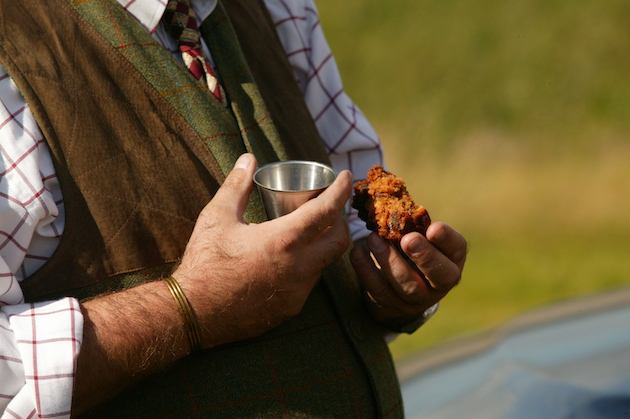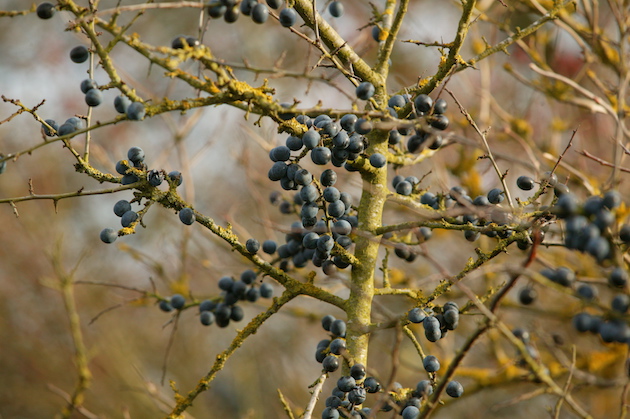Recipes
How to make fast sloe gin – that’s ready in a fortnight
<strong>After perfecting a method of producting superb sloe gin in a matter of days, Bill Harriman is happy to share his groundbreaking secret concoction</strong>
Would you like to speak to our readers? We offer sponsored articles and advertising to put you in front of our audience. Find out more. Just the job-some sloe gin and some of Joy VincentÕs fruitcake
Usd SG june 15 ian mason
Just the job-some sloe gin and some of Joy VincentÕs fruitcake
Usd SG june 15 ian mason
Sloe gin is a traditional shooter’s drink and it’s very straightforward to make. The only downside is that you have to wait a few months for the flavour to mature before you drink it.
That is, unless you follow this handy recipe which shows you how to make fast sloe gin, that will be ready a fortnight after making, rather than a year later.
I’ve carefully experimented with this recipe and I’m now confident that it holds its own. I think it’s always worthwhile making your own sloe gin if you can – the shop bought stuff is a bit sweet in my opinion.
Fast sloe gin that’s drinkable in a fortnight
Sloe gin is simply a tincture that depends on alcohol to extract the flavour and colour of the sloes. Traditionally, each sloe is painstakingly pricked before being immersed in gin. It’s a long process. You can of course freeze the sloes instead which also allows them to break down and absorb the alcohol.
I was inspired to develop my own recipe for fast sloe gin after I saw the wonderful ruby red colour of the juices oozing through the crust of a damson crumble. They formed a syrup which held the colour and flavour of the fruit to perfection. I reasoned that if a similar approach was taken with sloes, then sloe gin could be made in days rather than months. I was right and so here’s the delicious result of my researches.
Recipe for speedy sloe gin
INGREDIENTS
- 450g sloes
- 225g golden caster sugar
- 1L good quality gin
- Almond essence
- 75ml of 79.9 per cent Polish pure spirit vodka
STEP 1: Preparing the sloes
Discard any imperfect sloes and remove any leaves or stalks. Wash the sloes well. Place in an ovenproof dish and dust well with most of the caster sugar. Save 75g of sugar to adjust the sweetness later.
STEP 2: Making the syrup
Bake in a low oven (150 degrees C) for about 20 minutes. You may need to add a teaspoon of water to get the syrup to form. As the fruit starts to break down, stir it around to release the red syrup. When the fruit is a complete mush, take it out of the oven and allow it to cool. When cooled, you can adjust the sugar to taste.
STEP 3: Sieving the fruit
Spoon the stewed fruit into a sieve and force the skins and pulp through the mesh using a wooden spoon. This isolates the stones, which are then thrown away. Put the pulp and syrup into a large jar. Rinse out the oven dish and then sieve the last bits of the fruit with some of the gin to make sure that none of the fruit mixture is wasted.
STEP 4: Adding the gin
Top up the jar with the rest of the gin and leave to cool. After 72 hours test the brew for sweetness and add more sugar if you think it needs it. Give it stir. You may want to add a couple of drops of almond essence. I find this gives the drink a slightly nutty taste. Buy the best almond essence you can and avoid the synthetic stuff, which is normally called almond flavouring.
STEP 5: An extra kick
After a week I add about 75ml of 79.9 per cent Polish pure spirit vodka. Most gins are only 37.5 per cent by volume and I find them rather thin. The Polish firewater supercharges the mixture and gives it body. It’s flavourless and designed as a base for cocktails. You can buy this rocket fuel on the internet.
STEP 6: The waiting game
After a fortnight, the fast sloe gin is ready to drink. You can also ring the changes and use damsons instead of sloes if you fancy a change, can’t get hold of sloes or have a discovered a source of damsons.
Related articles
Manage Consent
To provide the best experiences, we use technologies like cookies to store and/or access device information. Consenting to these technologies will allow us to process data such as browsing behavior or unique IDs on this site. Not consenting or withdrawing consent, may adversely affect certain features and functions.
Functional Always active
The technical storage or access is strictly necessary for the legitimate purpose of enabling the use of a specific service explicitly requested by the subscriber or user, or for the sole purpose of carrying out the transmission of a communication over an electronic communications network.
Preferences
The technical storage or access is necessary for the legitimate purpose of storing preferences that are not requested by the subscriber or user.
Statistics
The technical storage or access that is used exclusively for statistical purposes.
The technical storage or access that is used exclusively for anonymous statistical purposes. Without a subpoena, voluntary compliance on the part of your Internet Service Provider, or additional records from a third party, information stored or retrieved for this purpose alone cannot usually be used to identify you.
Marketing
The technical storage or access is required to create user profiles to send advertising, or to track the user on a website or across several websites for similar marketing purposes.








